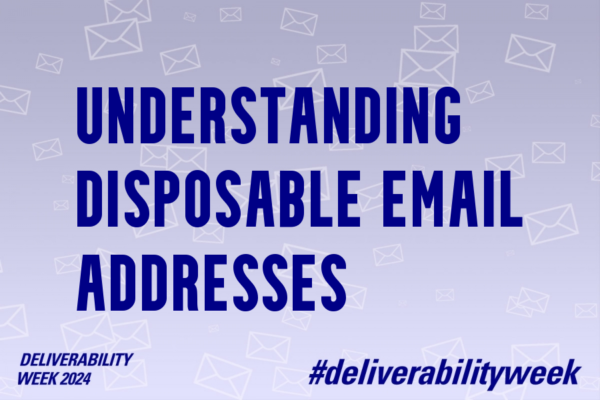Consumers often turn to disposable emails to keep their real inboxes clean, dodge unwanted emails when they’re forced to provide an address, or avoid brands they don’t trust with their data. Understanding why people use these throwaway emails is key for businesses aiming to build trust and improve their email marketing game.
But disposable email addresses can come in many flavors. Think single-use addresses, public mailboxes that anyone could peek into, addresses that auto self-destruct after a few messages, and forwarding addresses that can be turned off with a click. But what exactly counts as a disposable address? Is it a one-time use account, a secondary email for website sign-ups, a catch-all domain, or a tagged address you can disable anytime?
The presence of a large number of disposable email addresses on your marketing list could signify a number of different issues you may want to consider addressing, but the question remains. Why do consumers use a disposable email address?
Trustworthiness – If a large number of consumers give you a disposable email address this could signify that they don’t trust that your brand will manage their data appropriately, or you’ll flood their inbox with numerous offers. There are several examples of retailers collecting emails and sending dozens of emails weekly, possibly across multiple brands.
Address this item by being a good data steward, providing a clear description of the data use, and clear opt-in consent management purposes (i.e. unchecked boxes for subscriptions).
Discount seekers – Some consumers will look at disposable addresses as they are only interested in getting emails for a short period of time while their order is processing and the item is processing. The discount offered to first time purchasers is also a reason that consumers may use multiple or disposable email addresses when interacting with your brand. Who says no to a first time shopper discount or gift on ‘every’ purchase.
This one is harder to address, but consider changing how you implement the discount process. Offer the discount or gift on the second purchase or by barcode redeemed in store to avoid rewarding this behaviour.
Contest/Sweeps – being able to enter a contest and not be bombarded with offers or random sponsor messages beyond the contest period. It is also a way to have multiple entries as each email is usually seen as a separate entry and increases the individual’s potential of winning.
Implement a confirmation process for each entry and add limits to your contest rules excluding entries related to this type of behaviour.
Separation of emails – Let’s face it there have been a number of massive data breaches over the past few years, and some consumers no longer trust giving out their primary email address to every brand, so a temporary or disposable email address is a way that they can protect themselves from future issues by easily disabling an address that is leaked or shared beyond the original company that it was shared with.
Good data stewardship and strong data security practices can go a long way to protecting consumer data in this case. Be sure you only use the email in ways that the consumer has consented to.
Getting passed the wall – There are a large number of services that offer a consumer a centralized place to find things like insurance, mortgages or personal loans that clearly state that they will pass along the consumer’s information to several other parties. A temporary or disposable address is a tool that can be used to turn off the emails associated with these services when you no longer need the information or services.
Solve this by being clear on what you’ll be sharing and provide a single place for consumers to return to that will stop communication from partner websites. As the primary source of information being collected, make an effort to prevent possible abuse from your partners by limiting their numbers and holding them accountable for their actions. You could even offer services to send the service details on their behalf to the consumer without exchanging the users information.
It’s also important to understand that not all disposable email services are run by some random website. Yahoo even has a disposable email service available to their consumers that can be disabled at any time and look like mostly normal yahoo email addresses. Uses pre-configure email addresses with this service and then they can disable or delete them at any time.
Short term implementing a real-time address validation service to score disposable email domains is one option to stop the influx of transient or temporary subscribers to your list. But for a longer term solution consider reviewing your list practices and data collection processes should you start to see a lot of disposable email addresses in your marking subscription lists. you might just be sending the wrong signals to your subscribers about your intentions to send them emails.


